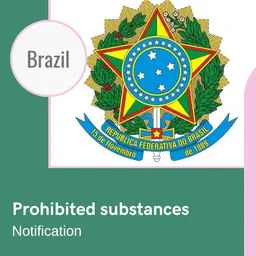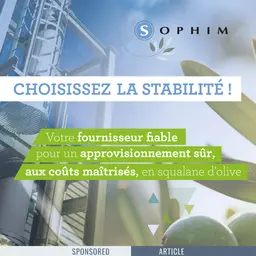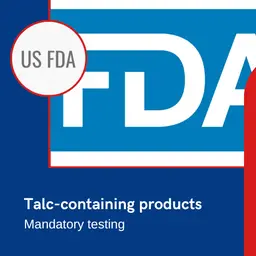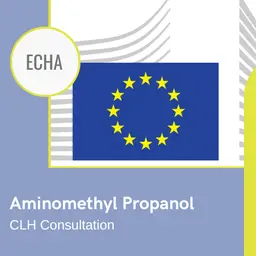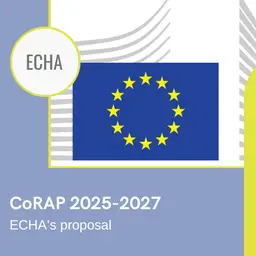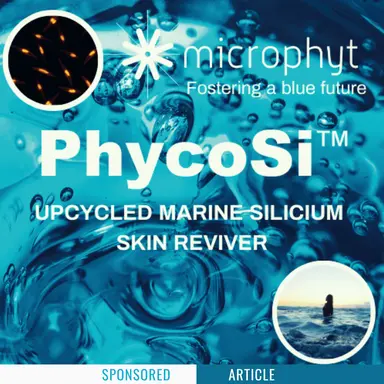
PhycoSi™, a product of innovation and upcycling, contains bioavailable marine silicium which restructures the skin deep down for results that can be seen at the surface. Once again, Microphyt – a leader in natural ingredients derived from microalgae – is addressing a key concern: ensuring effectiveness in cosmetics while respecting the environment.
After the age of 25, lifestyle and genetic factors lead to the first signs of skin ageing. The loss in thickness of the dermis (intermediate layer of the skin) and of the epidermis (top layer) makes fine lines and wrinkles more apparent on the face. At the same time, the skin loses its elasticity and firmness due to a slowdown in extracellular matrix synthesis.
As a specialist in microalgae cultivation and extraction processes, Microphyt managed to develop a manufacturing co-product from a nutraceutical ingredient to create PhycoSi™, an upcycled bioactive ingredient containing bioavailable marine silicium.
The company’s research teams therefore came up with a sustainable solution which meets consumers’ expectations for simple, healthy and effective cosmetics.
Several scientific trials (in-vitro and clinical) have proven how effectively PhycoSi™ restructures the skin thanks to its two main properties: it restructures deep down and regenerates at the surface.
These benefits are derived from the wall of the diatom (microalgae) Phaeodactylum tricornutum, a real catalyst that can transform inorganic silicium into organic silicium. This trace element is extremely helpful for the human body as it plays a metabolic and structural role in the synthesis and stabilisation of collagen in the dermis, which helps to maintain good hydration levels and therefore water homoeostasis.
Microalgae – natural and sustainable sources of silicium, an essential element for the skin
Despite being an abundant element in the earth’s crust, the organic form of silicium, which can be assimilated by the human body, is only found in 0.03% of the biota. The form currently used in cosmetics is mostly derived from bamboo and requires a combustion-based extraction process. As well as structurally altering the silicium, this approach is very energy-intensive, produces greenhouse gases and contributes to soil depletion.
Through its research into diatoms, and more specifically Phaeodactylum tricornutum (Figure 1), Microphyt identified another more sustainable source of silicium with beneficial effects for the skin. To create their own protective barrier against the external environment, diatoms (microalgae) transform the inorganic silicium found in oceans into organic silicium. Once incorporated into the microalgae, it enables them to build their own external wall that protects them and regulates their response to environmental constraints. This biological exoskeleton is just like our skin which protects itself against external aggressions.
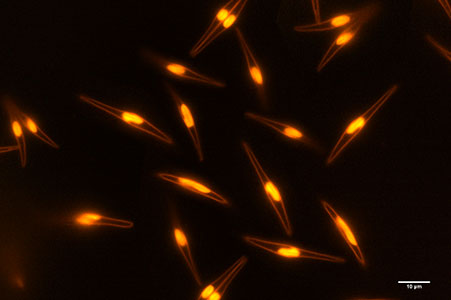
PhycoSi™, an ingredient derived from biotechnology and upcycling
PhycoSi™ is the result of Microphyt’s innovative prowess and its seven years of expertise in cultivating the Phaeodactylum tricornutum microalgae.
Thanks to its exclusive CAMARGUE photobioreactors (Figure 2) and a specific extraction process, Microphyt initially developed a lipid extract for the nutraceutical industry. By studying the residual biomass, the R&D team subsequently came up with a method to recover the silicium contained in this co-product. PhycoSi™ owes its performance to this silicium.

Two-step action: from deep down to the surface
PhycoSi™ first acts deep down in the dermis, after 14 days:
• Cell exchanges within the dermis are optimised via an increase in the production of AQP3 (Aquaporin 3) by fibroblasts (in-vitro trial).
• The dermis is redensified (Figure 3) and becomes firmer, more elastic and more toned (clinical trial).
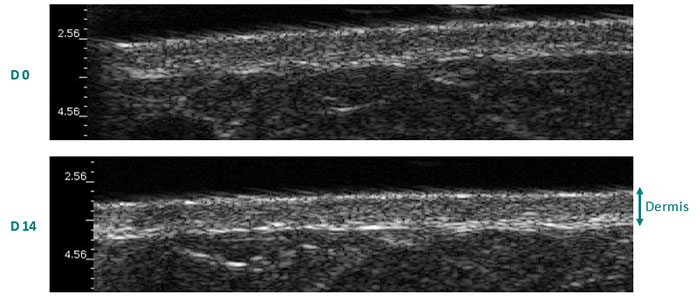
Protocol: application of a cream with 1.5% PhycoSi™ or a placebo cream for 14 days on 28 volunteers. The density of the dermis was analysed by ultrasound.
The second step takes place at the skin’s surface, in the epidermis, after 28 days:
• The skin barrier is restored and the skin’s permeability to external agents is reduced (in-vitro trial).
• The skin is gently exfoliated, dead cells are removed, the skin is regenerated (clinical trial).
• The skin’s microrelief is smoothed, fine lines and wrinkles are less apparent (Figure 4) (clinical trial).
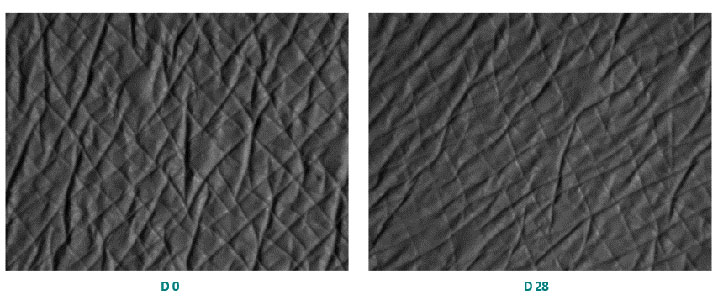
Protocol: application of a cream with 1.5% PhycoSi™ or a placebo cream for 28 days on 29 volunteers. The microrelief was analysed by skin replicas then by image analysis.
As a source of bioavailable marine silicium, PhycoSi™ is an effective daily skincare solution designed to regenerate the skin. It is perfectly suitable for preventive anti-age treatments. In addition to its performance, PhycoSi™ offers a natural and sustainable response in line with consumer demand.
Technical data
• INCI: water (and) phaeodactylum tricornutum extract (and) pentylene glycol
• Standard compound: silicium
• Preservative: none
• China: listed in the IECIC and notified on the NMPA platform
• COSMOS: approved
• Naturalness (ISO 16128): 100% natural origin
• Recommended use: 1.5%
• Appearance: water-soluble liquid
For more information: contact@microphyt.eu

